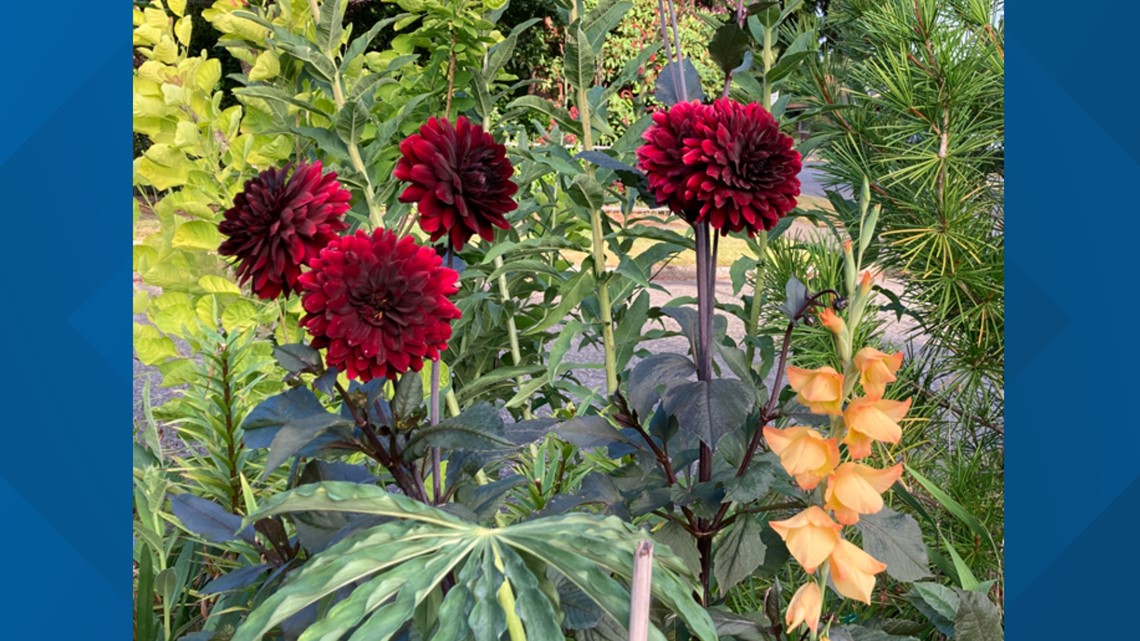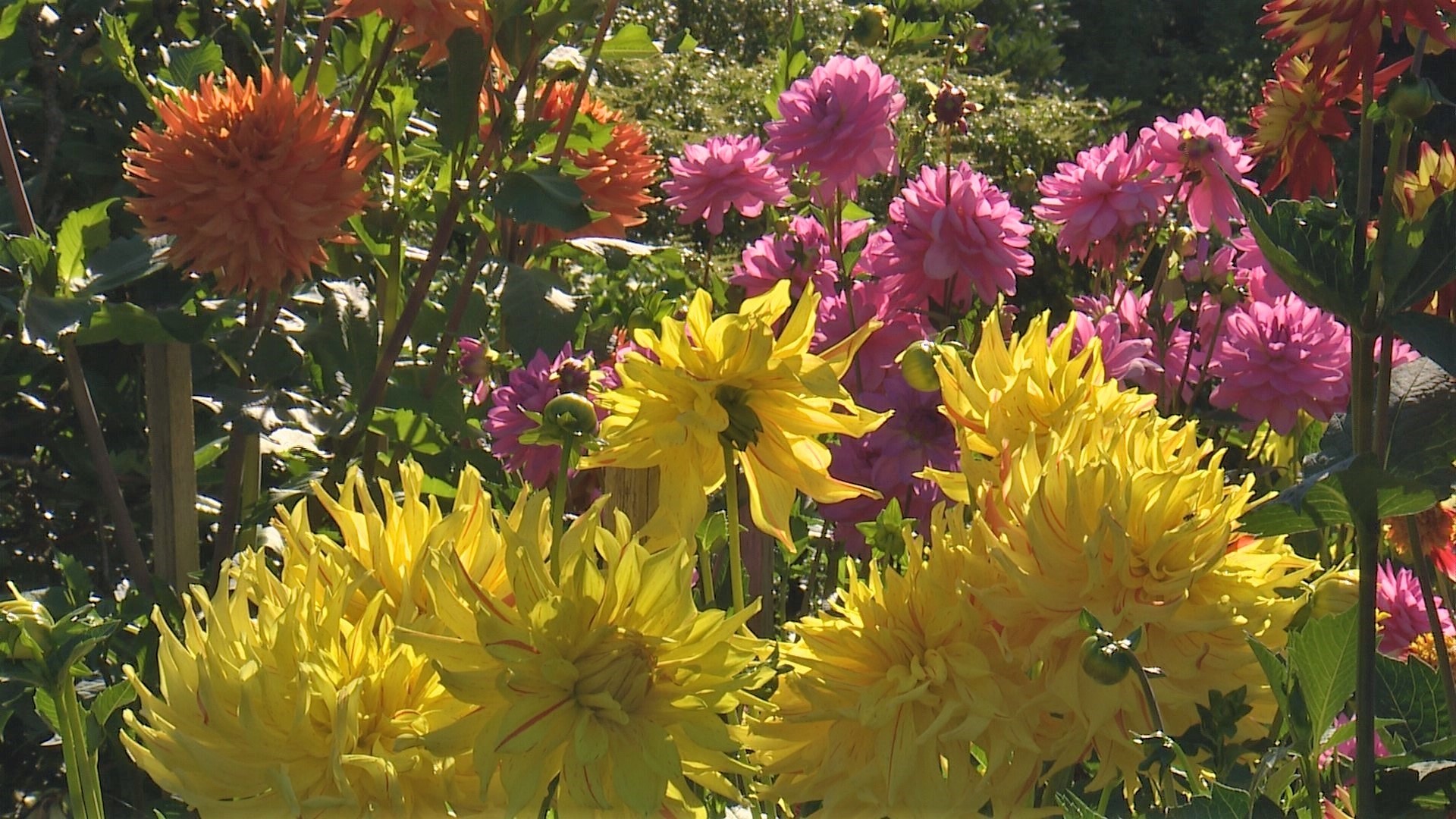SEATTLE — Few perennials can match dahlias when it comes to producing non-stop flowers. Their gorgeous blooms add beauty to any area of the garden, and if you get in half the trouble I do (How did I fail to notice those sheets drying on the clothesline when I turned on that sprinkler?) you’ll appreciate having the long-lasting cut flowers for use in Bouquets. The blooms come in almost every color imaginable with size varying from golf ball to dinner plate. Most local nurseries carry a great section of potted, ready to plant specimens. Keep an eye out for the rarer varieties with red or purple leaves. They’re exceptionally attractive with masses of colorful flowers that contrast beautifully with the wine-colored foliage. Plant your Dahlia in as much sun as possible in well-drained soil. To keep them blooming non-stop, keep the root zone well mulched and water regularly. Fertilize every 6 weeks by scratching a mixture of alfalfa meal and organic flower food into the soil around the root zone, and remove spent flowers regularly.
Most people dig and store their Dahlias tubers in winter, but I leave mine in the ground. After the foliage dies back in fall, cut the stems to the ground and mulch over the roots with a thick cover of evergreen fern fronds. The fronds are great insulators and they repel water, preventing the tubers from rotting in our cold rainy winters. Although I've lost a few in excessively cold winters, most survive to produce beautifully the following year. If over time, however, your Dalila begins losing vigor and produces fewer flowers, it’s a sure sign the tuberous roots are overcrowded and need dividing. Dig up the rootstock in fall after the leaves and stems turn black. Tap off the soil and dry the clumps in a frost-free area for at least 3 days before beginning the dividing process. First, discard any rotten or shriveled tubers. Next, divide the rootstock, either into individual tubers or into chunks containing a few tubers. Make sure that the tubers in the division are attached to a stem from the previous year, as those are the only ones that will produce growth the following spring. Wrap the divisions in several layers of newspaper and place them in open paper bags or cardboard boxes and store them in your unheated garage. Check the divisions now and then and if any tubers are shriveling, spritzer them with water from a spray bottle. If any long stems emerge from the tubers in storage, snap them off right before replanting in early May. Then relax. You’ll have more than enough flowers for the spectacular bouquets to make up all of the trouble you’re undoubtedly going to get into next summer.


Finally, don't be too fastidious when it comes to cleaning up your mixed border for winter. By this time of year, a lot of perennial plants are dying back, and it’s important to neaten things up to keep the garden from looking unsightly. At the same time, you don’t want to be too fastidious. The seed heads left in the garden will supply food for birds and other critters while foliage provides a sheltered place to forage for insects. Your garden will look much better if you simply remove any foliage that has turned slimy or just looks unattractive. Then take a look at what remains. Berries and seed heads don’t only feed birds; many are highly attractive and add interest to the winter garden. Seed heads on perennials such as black-eyed Susans, coneflowers, Phlomis, grasses, Monarda, torch lilies, Agapanthus, and many others are a major part of many of our winter bird’s diets. Removing them too soon will not only deprive birds of much-needed food, but you’ll miss out on the fun of watching bushtits, nuthatches, finches, juncos, and other birds flitting about, picking at seeds in your winter garden. Finally, leave as much foliage as possible. Wait to cut back the stems and foliage of grasses, evergreen perennials, salvias, hardy Fuchsia, and similar perennials until spring. The foliage will provide cover, protection from cold winds, and foraging grounds for all sorts of birds and animals. Your critters will greatly appreciate your efforts to turn your garden into a winter sanctuary.
Get more Pacific Northwest Gardening tips on Ciscoe's official website: Gardening with Ciscoe
Segment Producer Suzie Wiley. Watch New Day Northwest 11 AM weekdays on KING 5 and streaming live on KING5.com. Contact New Day.

